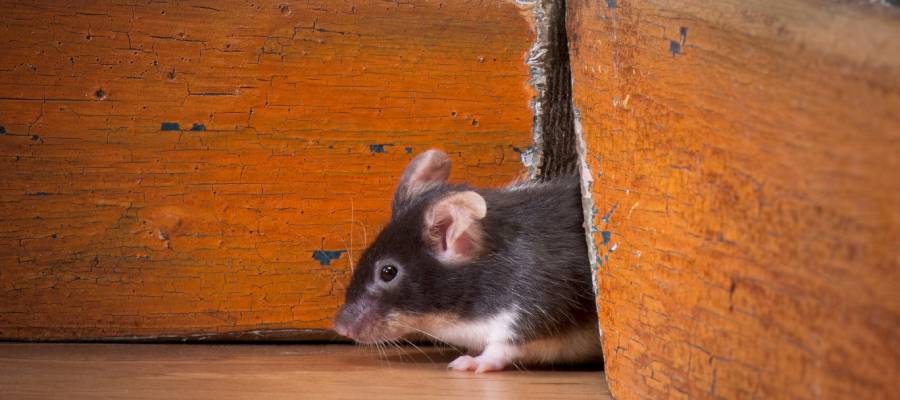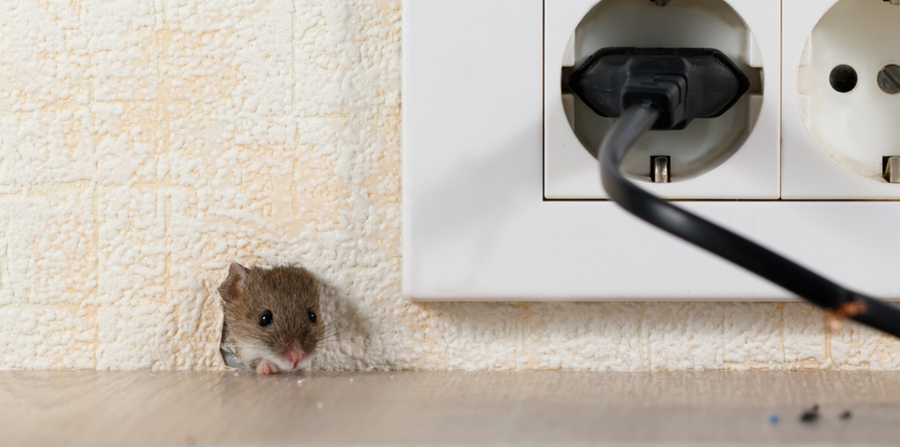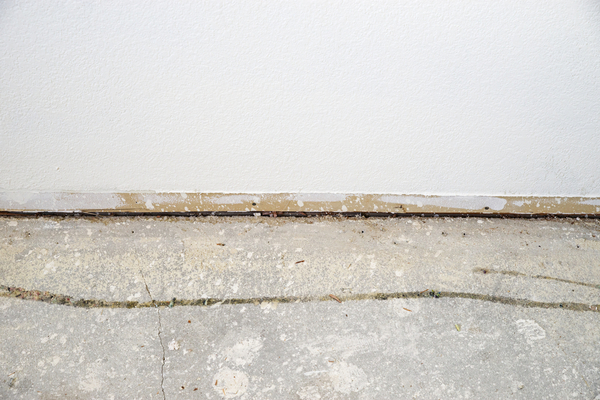Everyone poops, including pests and nuisance wildlife, and all of their individual droppings are unique to their species. You don’t need to know what every kind of animal poop looks like, but if you can distinguish rat and mouse poop in particular you can get an advantage in extermination and control within your home. But react carefully, as rodent droppings may be toxic if handled improperly. So, if you’ve found some mystery droppings piled in the attic or scattered in the backs of your cabinets, react carefully. Clean them properly, and be sure to call a professional pest exterminator like the team at Griffin Pest Solutions.
Mouse and Rat Droppings: An Overview
It shouldn’t surprise you to learn that, since rats are generally larger than mice, rat poop is larger as well. Rat droppings are typically shaped like a grape or coffee bean and sized about 1/2″-3/4″ long. They’re commonly mistaken for squirrel poop, although squirrel poop is rounded at the ends and will lighten over time. Compare this to mouse droppings, which are small and smooth and pointed like a grain of rice. These too are mistaken for another pest’s droppings – specifically the household cockroach. And, like the rat and squirrel, cockroach droppings can be distinguished from mice by their rounded ends.
Mice tend to pick a specific area of the home, separate from their nest, to use as their toilet. This may be in the back of your silverware drawer, under your sink, or behind areas where food is stored. Rats, on the other hand, will leave urine and droppings everywhere they go. You may find them scattered in the garage, crawl space or the basement. Regardless of where you find rodent droppings, your instinct may be to sweep them up as soon as you spot them. But is that the best strategy to take?
What to do With Rodent Poo
Let’s talk about Hantavirus. Hantavirus Pulmonary Syndrome is a severe respiratory disease that can start with fatigue and fever and end with the lungs filling with fluid. It has a mortality rate of 38%, but there have been no cases of HPS being transferred in the United States from one person to another. The real risk of Hantavirus comes from rodents – specifically, exposure to their infected droppings. That’s why we advise against sweeping or vacuuming any rat or mice poop that you might find, because if the rodent it came from was infected it will spread HPS into the air around you. If you’re looking to clean, there’s a better way to do it.
First, get your protective gear, specifically rubber gloves, goggles and a dust mask. Spray the waste with bleach or disinfectant until soaked and let it sit for five minutes. Then you can wipe the droppings with a paper towel and dispose of them, as well as your mask and gloves. From that point on you can wash your hands and focus on calling a pest exterminator – because, even though the droppings may be gone, the rodents who made them are still wandering around somewhere.
The Importance of Rodent Control
Rats and mice should not, under any circumstances, be left to live in your home unencumbered. The longer they live in your home, the more damage they can cause. They may burrow into the insulation in your walls and chew on electrical cables, creating a potential fire risk. They may gnaw and tear at personal belongings, as well as spread waste and smaller, parasitic pests like fleas wherever they go. Rodents like to inhabit vulnerable spaces, like the cabinets where you keep your food and the attics and basements where you store personal belongings. They can damage your home and anything inside of it – to put it simply, rodents make a mess. With the right exterminating team, you can remove pests like these and keep them from coming back. And if you’re a homeowner in Michigan, the best pest control team is Griffin Pest Solutions.
Griffin Pest Solutions for Rats and Mice
Since 1929, Griffin Pest Solutions has provided consistent and comprehensive pest control solutions for homes and businesses in Michigan’s Lower Peninsula. We focus on extermination as well as exclusion, so when we eliminate pests, we keep them out for good. So, while it’s true that everyone poops, not everyone should poop – especially not in your home. If you’re ready to stop playing janitor and get back to being comfortable in your own home, contact Griffin Pest Solutions today!



